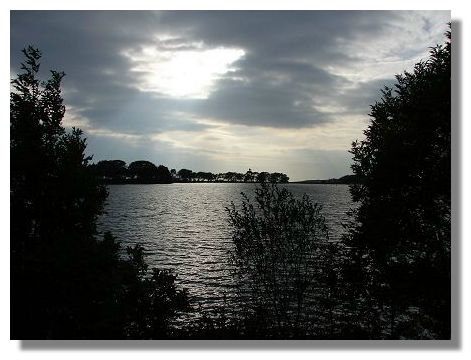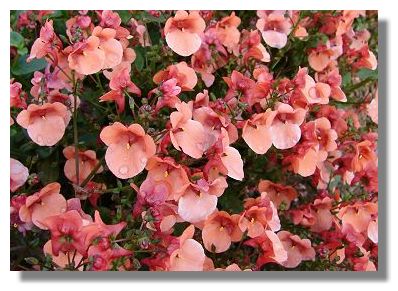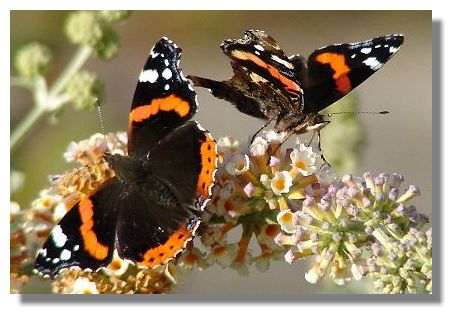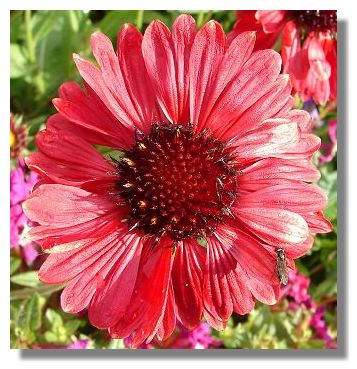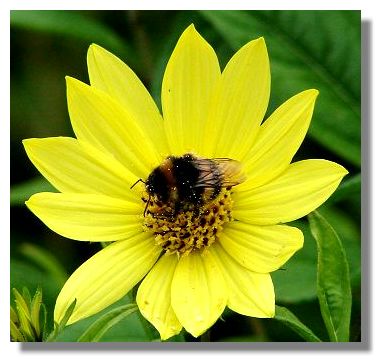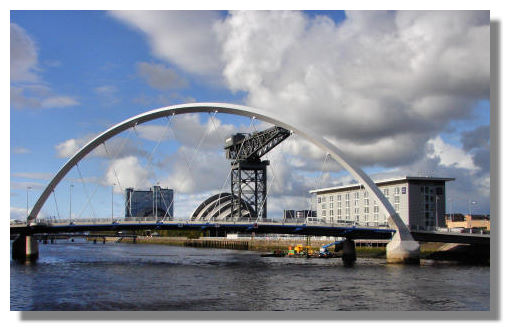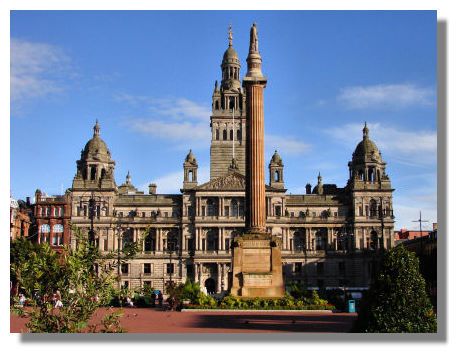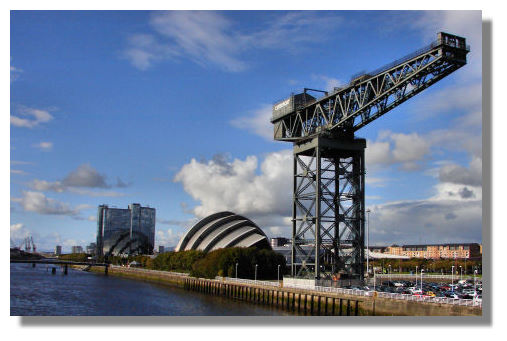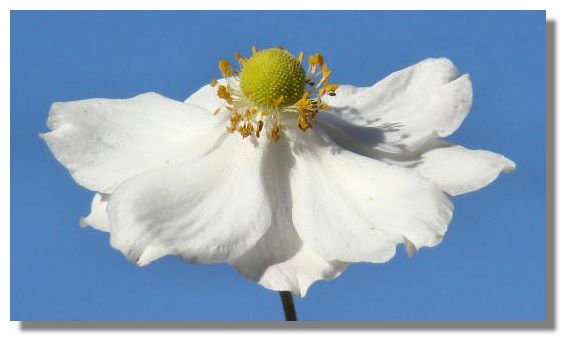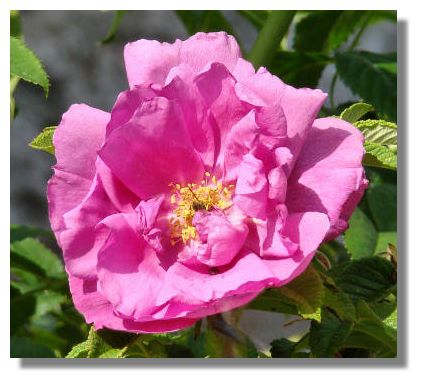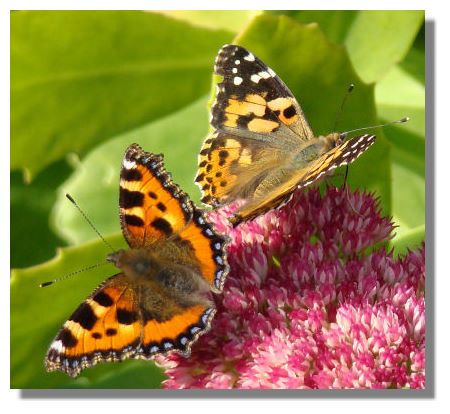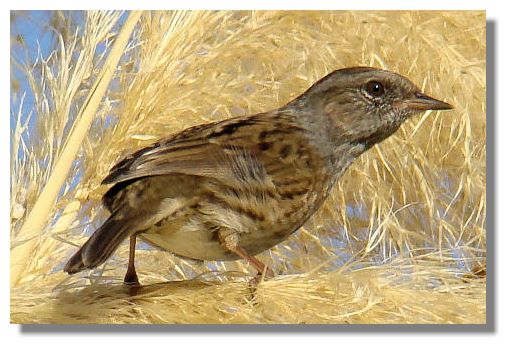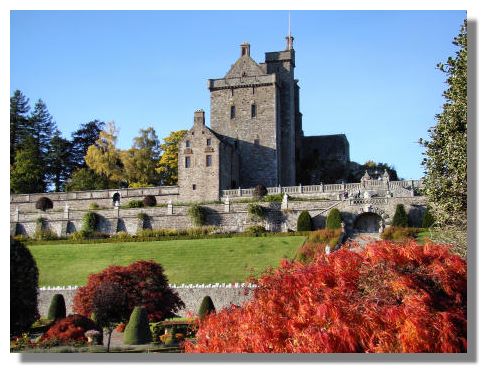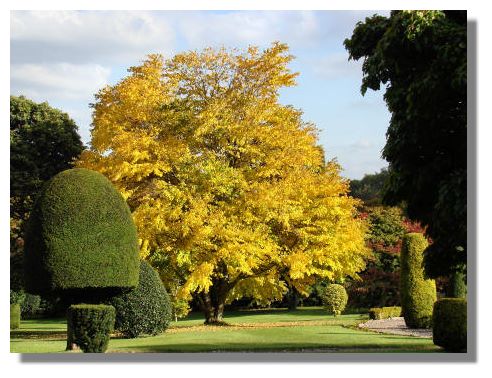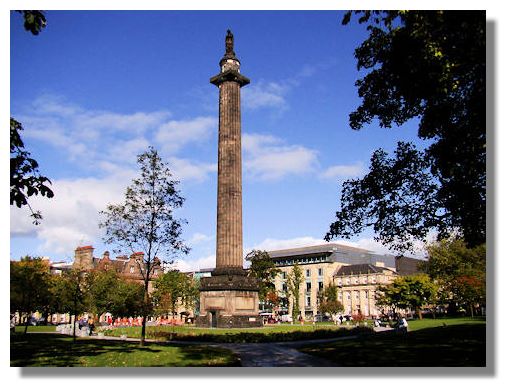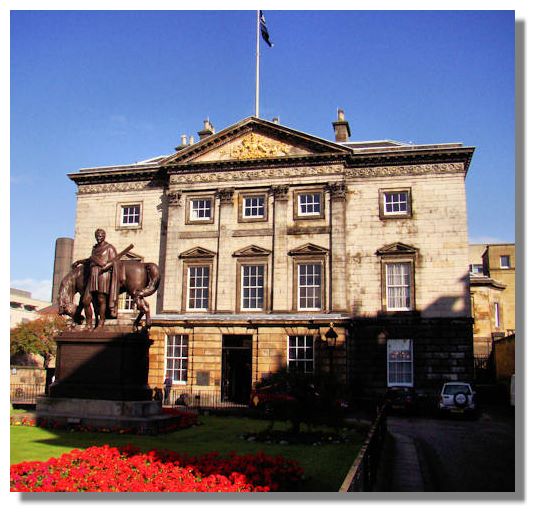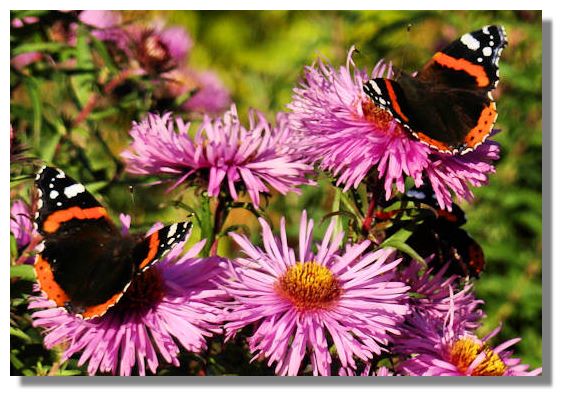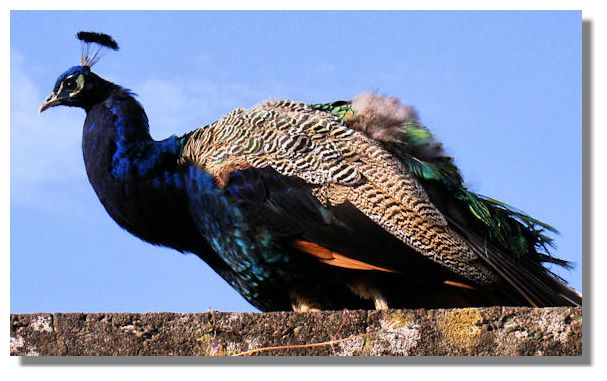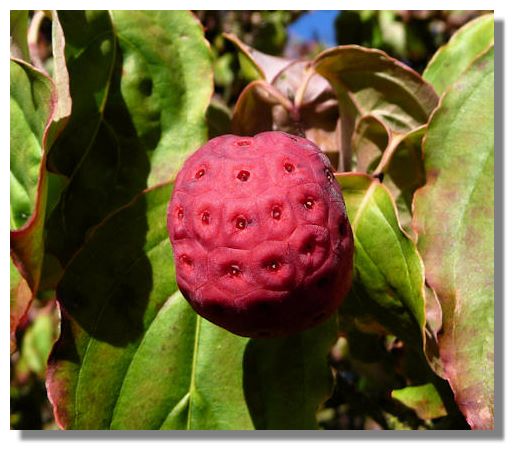The sun is often not much in evidence and this picture, across the water at Monikie Country Park in Angus, was taken because the sun was at least struggling to make an appearance.
Diascea may have small, individual flowers, but collectively they make a real splash of colour. These annuals are popular amomgst gardeners because of their very long flowering season. Planted as bedding plants in the spring, they flower right through until autumn. These ones were growing in the walled garden at Castle Fraser in Aberdeenshire.
There are not many butterflies flying around now, so it was a pleasant surprise to find quite a number enjoying the yellow flowers of the buddleja in the sunshine at Castle Fraser and to capture this illustration of two in the one picture.
Gaillardia are more usually seen a red centre and yellow tips to the petals but this variety is an attarctive, all-over shade of burgundy. It was growing beside the other type in the walled garden at Castle Fraser in Aberdeenshire.
If butterflies are in short supply, the same cannot be said for bees and wasps who are still busily gather nectar. This pollen-covered bee is on a Helianthus ("Lemon Queen" variety) in the demonstration garden of Glendoick Garden Centre, between Perth and Dundee.
The "Glasgow Arc" is the first vehicle crossing to be built over the river Clyde for since the Kingston Bridge more than 30 years ago. The graceful bridge only has a bus/taxi lane and one lane for private vehicles. Its construction was one of the requirements stipulated by BBC Scotland before they would agree to setting up their new HQ at Pacific Quay on the south side of the river. Indeed, the traffic controls and access to the bridge is restricted to allow a clear route to the BBC. Behind the bridge can be seen the Finnieston Crane and the Clyde Auditorium at the Scottish Exhibition and Concert Centre. Like the Clyde Arc (known locally as the "Squinty Bridge" as it crosses the river at an angle), the Clyde Auditorium has a better known nickname - the Armadillo.
Planters (which can be removed if the area is required for another purpose) form part of the "street furniture" installed in George Square by Glasgow City Council. They provide a nice "frame" for photographs of the square, the City Chambers and the tall column with a statue of Sir Walter Scott on the top. This was the first statue erected to the writer after his death.
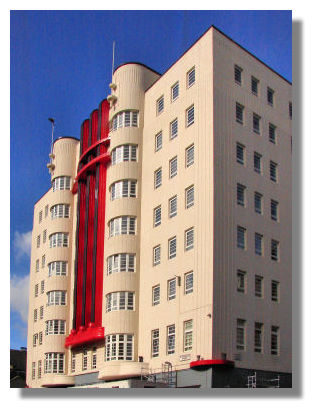
The art-deco 1930s Beresford Hotel was built for the Empire Exhibition in Glasgow in 1938 and the facade was created like a cinema to attract customers. After the war, while operating as Baird Hall, a students' hall of residence, the colours became more muted. But the recent reincarnation has seen the return of the scarlet and black fins and flagpoles at the top of the bulbous drum towers.
This photo was taken from the Squinty Bridge (see above) and shows the magnificent Finnieston Crane and the Clyde Auditorium at the Scottish Exhibition and Concert Centre. The auditorium is reflected in the glass of the Crowne Plaza Hotel (previously known as the Moat House) further along the riverbank. The crane is a relic of the days when locomotives and other large engineering products were exported via the docks at Finnieston. The hammer head crane was built in 1932 and was at that time the largest in Europe. It is 59 metres (195 feet) high and has a hammerhead jib of 46 metres (152 feet).
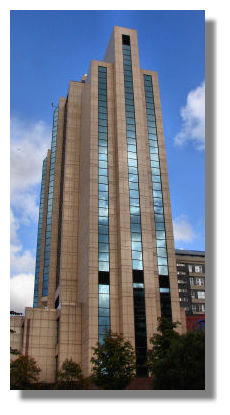
The narrowness of the Glasgow Hilton Hotel makes it look taller than it really is - at 70 metres, it is slightly smaller than the City Chambers (see photo above). The hotel was built in 1992, beside the approach ramp to the Kingston Bridge.
The tall white Anemone Japonica is a late-flowering variety of anemone and will be in bloom for many weeks. This picture was taken at Drummond Castle Gardens in Perthshire.
"Rosa Rugosa" (also known as Japanese Rose or Ramanas Rose) is a species of rose native to eastern Asia. It is grown not just for its striking red, pink and white flowers, but for the large, decorative hips or seed pods which are 2-3 centimetres (around an inch) in diameter.
Over the summer, there has been a marked absence of butterflies. So it was great to find large numbers of them feeding voraciously on the Sedum "Autumn Joy" in the gardens of Drummond Castle. Although there was a certain amount of wing flicking to scare off bees and wasps, this Painted Lady and Small Tortoiseshell seemed to tolerate one another as they enjoyed the nectar and the warmth of the sun. Sadly, none of the Painted Ladies will survive a Scottish winter but the Small Tortoiseshell may manage to hibernate in sheds or barns.
This Dunnock is normally a ground feeder but the seeds of the tall Pampas Grass proved to be a great attraction.
The autumn colours were very much in evidence this week at Drummond Castle with this Acer making a particularly striking impact. But there were many other ornamental trees in the formal garden lending splashes of bright colour.
The sun was getting lower in the sky when this photo of another ornamental tree in Drummond Castle was taken. Even so, it shone like a beacon across the garden.
Until recently, the central garden area of St Andrew Square in Edinburgh was fenced off and was not accessible to the public. Now, the private garden has been taken over and after a £2.6 million makeover, is now open to all. The monument to Henry Dundas, Viscount Melville, is modelled on Trajan's Column in Rome. Henry Dundas was a distinguished lawyer and became Solicitor General for Scotland in 1766 and later Lord Advocate in 1775. He became a Member of Parliament of Great Britain in 1774 and had a distinguished career as Home Secretary, War Secretary and First Lord of the Admiralty.
The early plans for the Georgian New Town of Edinburgh placed a church on St Andrew Square to face the one in Charlotte Square, at the other end of George Street. But Sir Laurence Dundas got there first and built himself a grand mansion instead. It was later taken over by the Royal Bank of Scotland - the bank created a magnificent banking hall inside with a blue painted dome with gold, star-shaped windows letting in the light. A representation of this ceiling is incorporated into all the Royal's current banknote designs.
Michaelmas Daisies are part of the Aster family, a daisy-like herbaceous perennial. Michaelmas, the feast of St Michael, occurs on 29 September and Michaelmas Daisies are at their peak around that time. As it is one of a diminishing number of flowers in bloom at this time of year, it becomes a useful source of nectar for butterflies such as these Red Admiral butterflies.
Peafowl consist of two species of spectacularly plumaged pheasants, and the male peacock is famous for its iridescent blue-green or green coloured plumage and huge, elongated tail. This one is starting to grow its new plumage after moulting in the late summer. It was strutting on a wall at Drummond Castle in Perthshire and so its lack of tail feathers is perhaps not too obvious.
I always think that the fruit of Cornus (Dogwood) looks like an experiment in genetically modifying a strawberry - that went badly wrong! The fruits are sometimes known as dogberries or houndberries.
If you want to look back at other editions of these photos of Scotland week by week, there is an Index Page
